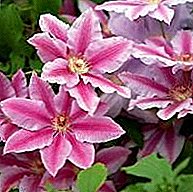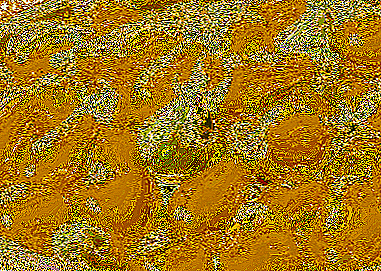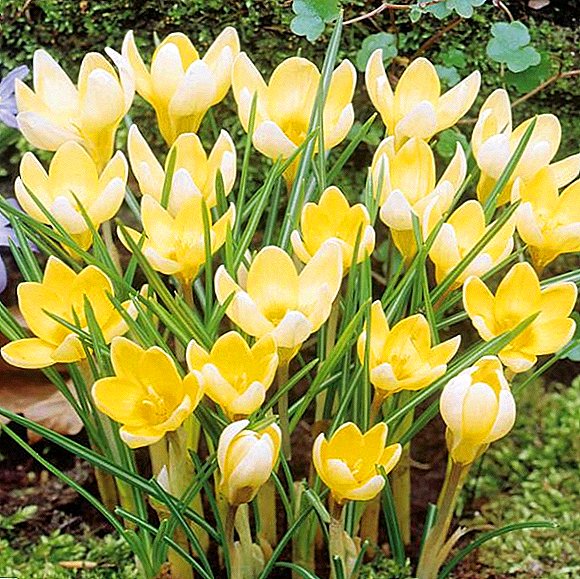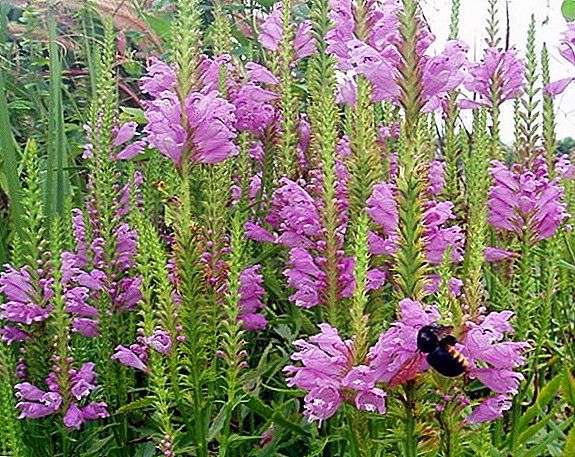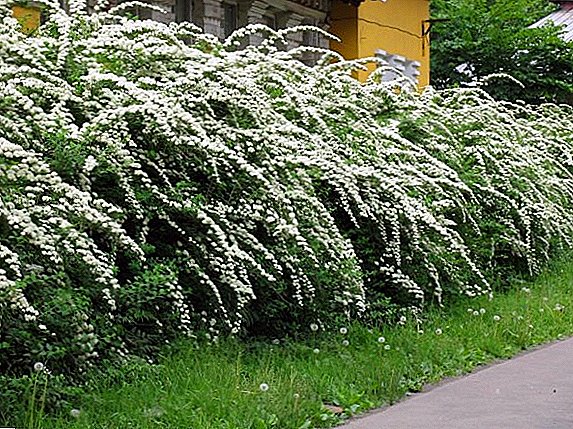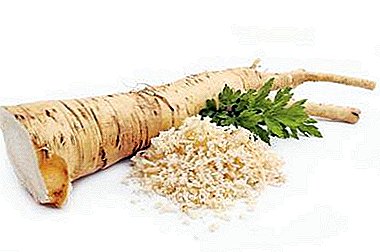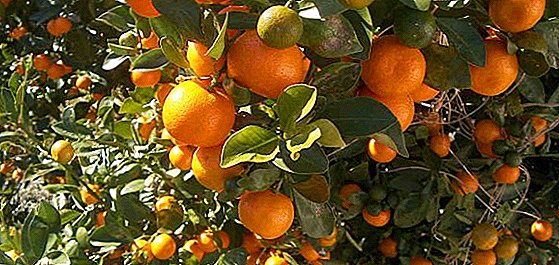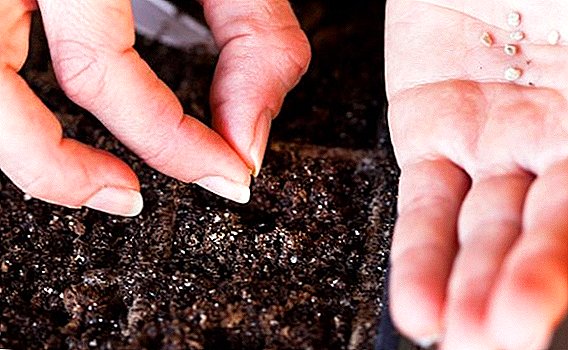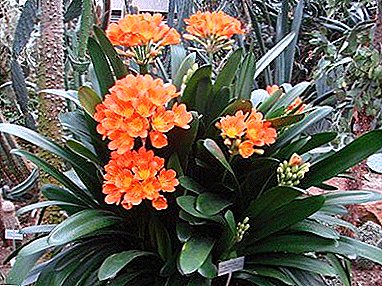
Cinnabar clivia - an ornamental houseplant with bright, orange-red flowers.
Guest from far South Africa it has got accustomed in middle latitudes, has gained popularity among fito-designers and amateur growers.
Miniatum clivia: home care
The flower is quite capricious, but due to the high decorative properties, many fans of bright colors tend to get it to create a spectacular decor. Long (up to 60 cm), wide (up to 6 cm) leaves and buds of rich orange color refresh the space.
Clivia miniata decorate home and office. Knowledge of the rules of care for the cleavage, plus a little patience, and a plant with red-orange petals will delight with juicy shades of buds on a long peduncle.
Can I keep at home?
 Plant tolerates temperature well, humidity, traditional for middle latitudes.
Plant tolerates temperature well, humidity, traditional for middle latitudes.
In summer, an exotic flower grows well in the open air, sure, in a slightly shaded place.
Position the pot taking into account the whims of an exotic flower, and during the flowering period the room will be decorated with bright sun from red-orange buds.
To humidity Clivia air miniats no special requirements: In warm weather, it is enough to treat long leaves with a damp cloth or sponge.
Temperature
"African miracle" with orange-red buds does not tolerate heat. Before buying a decorative element for decorating a room, consider whether you can create optimal conditions for the growth, flowering of clivia "cinnabar".
Requirements:
- Spring-summer - the thermometer should not rise above +25 C.
- During the release of the flower arrow, make sure that the temperature in the room was in the optimal range: no more than +20 C.
- October is here? It’s time to move the cut to a room where there will be no more than 12-14 degrees.
Note! During the "rest" (from October to November / December) Clivia miniata tolerates higher temperatures, but the health of the stems and leaves suffers from inappropriate conditions, and the eruptions of the peduncle occur.
Lighting
Consider the nuances when placing the pot:
- bright, of course, diffused lighting - plus, the direct rays of the sun - minus;
- optimal placement - near the east or west window;
- when placing a flower pot on the south side, be sure to create some shade.
IMPORTANT! Cinnabar clivia with bright orange-red buds does not like direct sun, but full shadow is undesirable.Avoid the north side: the lack of light adversely affects the growth of the Miniaty clivia, the quality and duration of flowering. Sometimes the buds do not appear at all.
Landing how to transplant
Perform manipulations carefully, less disturb the flower. Improper transplantation often ruins the bright decoration of the room.
Rules:
- Repot the young sprouts every year, move the clivia orange to another pot every two or three years;
- fleshy roots react negatively to transplantation;
- in case of damage, rotting of the plant roots, sprinkle them with ashes or crushed coal.
IMPORTANT! In the years when Clivia Orange remains without a transplant, refresh the top layer of earth. By the end of February, remove a few centimeters of soil, add a fresh earth mixture to the pot.
Useful tips:
- choose a small pot: limited space will provide regular, long-term flowering of Clivia;
- When planting in a spacious pot, the power of clivia miniates will be aimed at the formation of strong rhizomes. With the wrong selection of a pot of perfect flowers you will not wait.
Priming
To the composition of the soil clivia orange does not impose special requirements:
- prepare a mixture of sand, leaf and sod land (proportions 1: 2: 6);
- light soil with a weakly acid reaction is an ideal environment for the growth of a decorative flower.
Reference! Good drainage at the bottom of the flower pot is important for maintaining optimum soil moisture.
Fertilizer
 Fertilizing clivia of cinnabar (clivia "miniat") produce in spring and summer.
Fertilizing clivia of cinnabar (clivia "miniat") produce in spring and summer.
Effectively liquid organic, mineral fertilizers are needed.
Every two weeks alternate organic and synthetic substances.
Be sure to nourish the soil when throwing a flower arrow.
Watering
"African beauty" does not tolerate waterlogging. Water the plant with soft distilled water at room temperature.
How to act:
- From the beginning of October to the end of November (or until December, if the age of a clivia cinnabar has reached two to three years), watering is not needed. Resume soil moisture if the plant drops leaves;
- during flowering, make sure that the earthen room is slightly dried between waterings;
- water stagnated in the pan - harm to an exotic plant.
Tip! After the formation of bright buds, water the plant more actively. Use only warm water to moisten the ground.
Bloom
 Characteristics:
Characteristics:
- February - May. Clavaria clivia produces long (up to 50 cm) peduncle;
- the arrow is crowned with a rosette with spectacular colors (most often from 10 to 20 pieces);
- funnel-shaped buds have a pedicle 2-3 cm long, petals up to 5 cm;
- bright buds of rich, red-orange color, yellow mouth.
Tips:
- after releasing the arrow, carefully transfer the flower to a warmer place;
- Be sure to fertilize the land, water it a little more abundantly
- “bother” orange cleavia when the flower spike has grown no less than 10-15 cm.
Take note:
- experienced growers recommend to move the pot less frequently during the formation of buds;
- when transferring a pot with a flower to a new place, be sure to put an orange clique so as to maintain the previous direction of growth.
IMPORTANT! Dried buds and peduncle (only after drying) carefully remove.
Rest period
Without this stage, do not achieve abundant flowering. The optimal time for “rest” depends on age: for young people - 2 months (October - November), for adults - until the end of December.
Care instructions:
- Be sure to move the orange cleavia to a cool place. Make sure that the air does not warm up above +14 C, but below 12 degrees is also undesirable: the plant will weaken;
- watering infrequently, if the leaves began to fall, add a little water;
- rest lasts 2-3 months;
- after this period, remove cinnabar from hibernation: provide 18-20 degrees of heat;
- at the same time as the temperature changes, return the previous lighting: a sufficient level of light without direct rays.
Cinnabar Clivia flower in the photo below:




Breeding
Seed
Features:
- fruits ripen on the ninth - tenth month after pollination;
- From November to April, collect the seeds of Clivia orange, sow in a mixture of the same parts of turf and sand. Peat take half less;
- a month and a half later shoots appear;
- transplant the young plant in a small pot after the appearance of the first leaf. Soil: peat, sand and humus - by 1 part, turf - 2 parts;
- as the flower grows, increase the size of the pot to 9-10 cm in the second year, to 12 -13 cm in the third;
- after six months, the leaves are already 4 or 5, in the second year three more are added - four pairs of wide, long leaves;
- on the third year in the fall for 2 months, be sure to ensure rest, the right temperature, humidity: if the conditions are met, a third of the seedlings will bloom for the first time.
Vegetative
Recommendations:
- at home, use "kids" (shoots);
- when transplanting an exotic plant, carefully separate the offspring on which 4 or more leaves are developed;
- for the growth of offspring suitable mixture of equal parts of the greenhouse, leaf and sod land;
- waterlogging is unacceptable: the transplanted "kids" easily rot from excessive watering;
- in two - three years, while observing the temperature, ensuring the rest period, Clivia will surely please you with bright colors.
Benefit and harm
 The mini Clivia ornamental plant originally from South Africa brings warmth to the house.
The mini Clivia ornamental plant originally from South Africa brings warmth to the house.
Flower funnel buds orange-red shade on a long peduncle adorns any room, thanks to its exotic appearance.
Negative impact Clivia miniata has not been identified: decorative element does not harm people prone to allergies.
Diseases and pests
Clivia is quite capricious: amateur grower will have to try to please the South African "beauty." If you violate the rules of maintenance and care of the appearance, the decorative properties of the plant deteriorates, flowering is not so abundant.
Problems and causes:
- not a long arrow. Minimum moisture, low temperature during clivia growth;
- lack of buds. The pot of cinnabar clavius stood in an inadequately lit place, the rest before the flowering was too short, the temperature was above the norm;
- leaves are covered with white spots. Clivia orange has long been in the direct sun.
Pests:
- mealybug. All ground parts of the ornamental flower are affected, clivia leaves curl, dry, fall. In the absence of timely measures, the flower dies. Wipe the leaves with a sponge dipped in soapy water. In case of severe damage to Clivia Orange for spraying, use Actellica 0.15% solution;
- schitovka. On the stem, the leaves are visible brown plaques. Gradually, the grasses suck the juice, the cells lose moisture, the pigmentation disappears, the affected leaves dry and fall off. Measures to combat the scytum are similar to eliminating the influence of the mealybug on the growth and flowering of clivia miniatus.
If you comply with the requirements for care, sufficient attention to the lighting, the temperature regime of clivium cinnabar for several years will be a bright decoration of your home or office.


